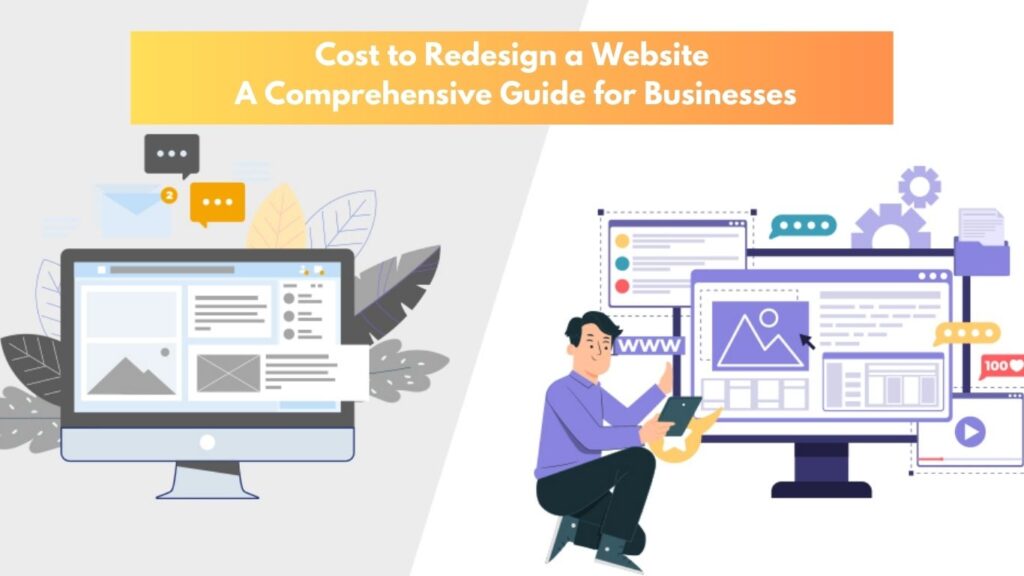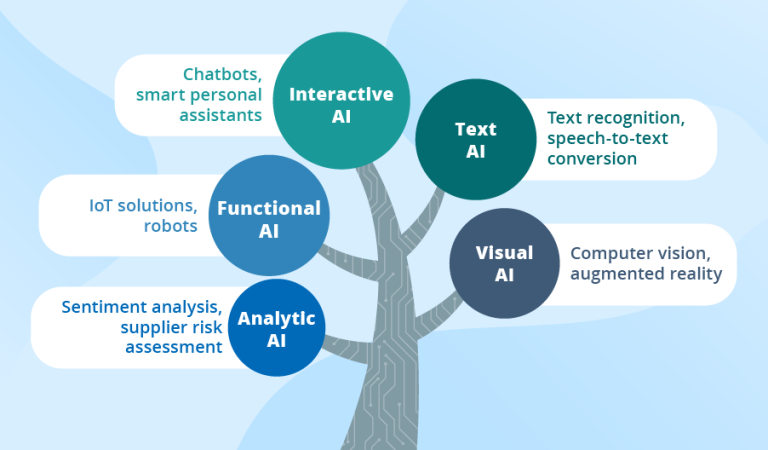Discover the key factors influencing the cost to redesign a website in 2025. This guide covers cost breakdowns, professional redesign processes, and tips to optimize your budget without compromising on quality.
What is Website Redesign?
A website redesign is the process of updating an existing website to enhance its appearance, functionality, and performance. While a redesign may involve aesthetic changes, it typically goes beyond just a fresh look. It encompasses various elements aimed at improving user experience (UX), increasing search engine rankings, and ensuring the website is technically up to date.
![Cost to Redesign a Website: A Comprehensive Guide for Businesses [Latest 2025] 7 Cost to Redesign a Website: A Comprehensive Guide for Businesses](https://hblabgroup.com/wp-content/uploads/2025/04/Cost-to-Redesign-a-Website-4.jpg)
A website redesign can include, but is not limited to, the following key components:
1. Visual and Layout Updates
The visual aspect of a website plays a crucial role in creating a positive first impression. A redesign often involves:
- Refreshing design elements: Color schemes, typography, images, and logos.
- Redesigning the layout: Optimizing for user navigation and providing a more modern look and feel.
- Responsive design: Making sure the website is fully functional across different devices, including mobile phones and tablets.
2. Technical Improvements
Improving the technical aspects of a website can significantly enhance its performance:
- Faster page load times: A slow website can harm user experience and SEO rankings. A redesign often includes optimizations to improve speed.
- Updating backend technologies: Ensuring the site uses the latest frameworks, coding practices, and software tools.
- Mobile-first design: With mobile traffic on the rise, a mobile-first design approach is critical for providing a seamless user experience.
3. SEO Optimization
Search Engine Optimization (SEO) is one of the most important considerations during a redesign:
- On-page SEO improvements: Including keyword-rich headings, alt texts for images, meta descriptions, and internal linking to improve search engine visibility.
- Optimizing content: Updating old content, adding new keywords, and ensuring that the site meets the latest SEO standards.
- Mobile optimization for SEO: Google prioritizes mobile-friendly websites, making it essential to ensure the redesign is optimized for mobile search.
4. Content Updates
One of the main reasons businesses redesign their websites is to refresh their content:
- Revamping copy: Updating outdated information, refining messaging, and ensuring the website reflects the brand’s current goals.
- Adding new content: Including blogs, case studies, videos, or other engaging materials that keep visitors informed and engaged.
- Improving content structure: Making the website’s content easier to read, with proper formatting, headings, and calls to action.
5. User Experience (UX) Enhancements
UX is a key focus in any website redesign. A seamless and enjoyable experience helps retain visitors and boosts conversion rates. UX improvements might include:
- Intuitive navigation: Simplifying the menu structure to help users find information quickly and easily.
- Clear calls to action: Making it obvious what steps users should take next, whether it’s contacting you, making a purchase, or reading more content.
- Accessibility: Ensuring the website is accessible to all users, including those with disabilities, by following WCAG (Web Content Accessibility Guidelines).
![Cost to Redesign a Website: A Comprehensive Guide for Businesses [Latest 2025] 8 Cost to Redesign a Website: A Comprehensive Guide for Businesses](https://hblabgroup.com/wp-content/uploads/2025/04/Cost-to-Redesign-a-Website-2.jpg)
6. Integration with Third-Party Tools
Many businesses integrate their websites with various third-party tools and platforms:
- E-commerce platforms: For online stores, ensuring seamless integration with payment gateways, inventory management, and CRM systems.
- Marketing automation: Integration with tools like email marketing platforms or social media feeds.
- Analytics tools: Implementing tracking tools like Google Analytics to monitor site performance and user behavior.
7. Security Enhancements
Cybersecurity is critical in today’s digital world. A website redesign may include:
- SSL certificates: Encrypting data transmitted between users and the website to protect sensitive information.
- Upgrading security features: Implementing new security protocols to prevent hacking and data breaches.
- User privacy protection: Adhering to regulations like GDPR to protect user data.
>> Read more: Why Choose Custom Web Development Over WordPress?
Key Factors That Influence the Cost to Redesign a Website
The cost of redesigning a website can vary significantly based on several factors. Understanding these factors can help businesses plan their redesign projects and make informed decisions when budgeting for the process.
Here are some key elements that influence the cost of redesigning a website:
1. Website Size and Complexity
- Small websites: A simple website with a few pages, such as a brochure-style site, will usually cost less to redesign. The complexity is lower, and fewer features are required.
- Medium to large websites: Websites with numerous pages, advanced functionality, or complex integrations (e.g., e-commerce features, membership systems) will be more expensive to redesign due to the increased workload and resources required.
2. Design and User Experience (UX)
The quality of design and UX is a significant factor in determining cost:
- Custom design: A fully customized design tailored to your brand and specific needs is more expensive than using a pre-made template.
- User experience enhancements: Creating an intuitive, easy-to-navigate design, optimizing page flow, and improving site usability can increase costs, especially if user research or testing is involved.
3. Content Creation and Updates
Redesigning a website often involves updating or creating new content:
- Content writing: The cost may increase if you need professional copywriters to create new copy or revamp existing content for SEO and branding purposes.
- Multimedia content: Adding videos, graphics, or custom images can also add to the cost of the redesign.
![Cost to Redesign a Website: A Comprehensive Guide for Businesses [Latest 2025] 9 Cost to Redesign a Website](https://hblabgroup.com/wp-content/uploads/2025/04/Cost-to-Redesign-a-Website-5.jpg)
4. Functionality and Features
The more complex the features, the higher the cost. Examples include:
- E-commerce integration: Adding or improving online store features requires a higher investment due to payment gateway integrations, product catalog management, and shopping cart functionality.
- Custom functionalities: Features like booking systems, custom forms, or customer dashboards require additional coding and testing, which can drive up costs.
- Third-party integrations: Integrating third-party services like CRMs, email marketing platforms, or analytics tools can add to the overall cost of the project.
![Cost to Redesign a Website: A Comprehensive Guide for Businesses [Latest 2025] 10 Cost to Redesign a Website](https://hblabgroup.com/wp-content/uploads/2025/04/Cost-to-Redesign-a-Website-7.jpg)
5. Development and Technology Stack
The choice of technology used in your website redesign also impacts the cost:
- CMS platform: Websites built on complex Content Management Systems (CMS) like WordPress, Drupal, or custom solutions can cost more due to the development required.
- Responsive and mobile-first design: Ensuring that the website functions flawlessly across all devices, including smartphones and tablets, often requires more advanced development skills, which can raise the cost.
- Website hosting and security: Higher costs may also arise from the need for robust security measures, including SSL certificates, secure hosting solutions, and data protection.
6. SEO and Digital Marketing
SEO plays a crucial role in the redesign process. Websites need to be optimized to improve search engine rankings and online visibility:
- SEO audit and keyword research: Conducting a full SEO audit and performing keyword research can add costs, especially if your current website requires substantial SEO improvements.
- On-page SEO: Optimizing elements like titles, meta descriptions, headers, and alt tags to meet SEO best practices is another aspect that influences cost.
- Ongoing SEO management: If your redesign includes a long-term SEO strategy, such as content updates, blog posts, or link building, it can further increase the budget.
7. Project Timeline and Deadlines
A tight project deadline or rush job often leads to higher costs:
- Time constraints: If the redesign needs to be completed quickly, it may require more resources or working outside of normal business hours, leading to a higher cost.
- Project scope: The broader the scope of the project, the longer the timeline will be, which can increase the overall cost.
8. Maintenance and Ongoing Support
Many businesses need ongoing support and maintenance after a redesign:
- Ongoing updates: Regular content updates, software updates, and maintenance checks can add to the cost.
- Support services: Some website design agencies offer post-launch support packages, which may include troubleshooting, updates, and ensuring the site is running smoothly.
Cost to Redesign a Website: Breakdown for Australia and Singapore
Australia Website Redesign Costs
- Small Website: AUD 3,000 – AUD 8,000 (simple websites with basic functionality and mobile optimization)
- Medium Website: AUD 8,000 – AUD 20,000 (more complex sites with CMS, e-commerce, and SEO optimization)
- Large Website: AUD 20,000 – AUD 50,000+ (custom solutions, integrations, and advanced features)
Factors Influencing Cost:
- High labor costs
- Strong demand for quality services in major cities like Sydney and Melbourne
Singapore Website Redesign Costs
- Small Website: SGD 2,000 – SGD 6,000 (basic updates and mobile optimization)
- Medium Website: SGD 6,000 – SGD 15,000 (e-commerce, CMS, and SEO optimization)
- Large Website: SGD 15,000 – SGD 35,000+ (custom solutions and complex integrations)
Factors Influencing Cost:
- Slightly lower labor costs compared to Australia
- Tech-savvy market with regulatory requirements (e.g., PDPA compliance)
Professional Website Redesign Process
A professional website redesign typically follows a structured approach to ensure that the final product meets business goals, enhances user experience, and performs well across various devices. Here’s an overview of the key stages involved:
1. Initial Discovery and Research
The redesign process begins with a deep dive into understanding the brand, business goals, and target users:
- Client Discussions: Gathering detailed insights about the company’s vision, challenges with the existing website, and goals for the new one.
- User Research: Identifying key user demographics and behaviors to design a better user journey.
- Competitor Benchmarking: Reviewing competitors’ websites to find opportunities for differentiation.
- Website Audit: Analyzing the current site’s design, content, SEO performance, and technical structure.
![Cost to Redesign a Website: A Comprehensive Guide for Businesses [Latest 2025] 11 Cost to Redesign a Website](https://hblabgroup.com/wp-content/uploads/2025/04/Cost-to-Redesign-a-Website-6.jpg)
2. Strategic Planning
Once research is complete, a clear roadmap is created:
- Setting Redesign Goals: Establishing clear objectives like improving lead generation, increasing user engagement, or boosting SEO rankings.
- Sitemap and Wireframes: Designing a visual structure for the new website to plan navigation paths and content placement.
- Content Strategy: Deciding which content will be updated, rewritten, or created from scratch to better align with user needs and SEO best practices.
3. Creative Design and Technical Development
This stage brings the vision to life through design and coding:
- Visual Concepts: Developing creative layouts and design prototypes based on branding guidelines and user experience principles.
- Client Feedback Loop: Gathering client input at key stages to ensure the design matches expectations.
- Website Development: Building the front-end and back-end, integrating new functionalities like CMS platforms, e-commerce systems, or CRM connections.
4. Testing and Quality Control
Before launching, the new site undergoes rigorous testing:
- Functionality Checks: Verifying that forms, buttons, menus, and other interactive elements work properly.
- Cross-Browser and Device Testing: Ensuring the site displays perfectly across various browsers (Chrome, Safari, Firefox) and devices (desktop, tablet, smartphone).
- Speed and Performance Optimization: Fine-tuning for faster load times and better user experience.
5. Website Launch
After successful testing, the redesigned website is launched:
- Deployment: Publishing the site live with minimal downtime and ensuring all redirects and technical setups are correctly handled.
- Live Monitoring: Closely observing the site’s performance during the initial days to catch and fix any unexpected issues.
- SEO Setup: Making sure metadata, alt text, XML sitemaps, and Google Analytics are properly configured.
6. Ongoing Maintenance and Improvements
A successful website continues to evolve even after the launch:
- Regular Updates: Keeping software, plugins, and content fresh to maintain security and relevance.
- Performance Reviews: Periodically analyzing site speed, SEO rankings, and user engagement metrics.
- Continuous Improvement: Refining the design and content based on real user feedback and data insights to maximize results over time.
Tips to Lower the Cost to Redesign a Website Without Sacrificing Quality
Redesigning a website professionally doesn’t have to be overly expensive. By making strategic choices, businesses can control costs while still achieving excellent results. One highly effective strategy is to leverage IT outsourcing services, particularly from trusted partners like HBLAB — one of Vietnam’s leading IT companies. Here’s how:
1. Outsource to a Trusted IT Partner
Partnering with a specialized IT outsourcing company like HBLAB gives you access to top-tier talent at a more competitive rate than hiring in-house or engaging local agencies in Australia or Singapore. HBLAB’s dedicated teams bring years of website design and development experience, ensuring quality without the premium price tag.
2. Clearly Define Your Project Scope
Outsourcing becomes even more cost-effective when you have a detailed scope of work. Identify critical features and avoid unnecessary customizations upfront. HBLAB’s professional project managers can assist in refining your requirements to maximize value and minimize wasted effort.
3. Focus on High-Impact Areas First
Prioritize redesigning the most important pages — like the homepage, service pages, and landing pages — and phase out additional improvements over time. With flexible engagement models, HBLAB allows businesses to scale their projects in stages based on their budget and timeline.
4. Leverage Existing Resources
Using your current content, images, or branding materials (when appropriate) can speed up the redesign process and reduce costs. HBLAB’s design teams are skilled at modernizing and enhancing existing assets to fit new layouts and functionality.
5. Benefit from Technical Expertise
HBLAB ensures that your new website is built with modern, scalable technology stacks — making future updates and maintenance easier and less costly. Their experienced developers also optimize websites for performance, SEO, and mobile responsiveness right from the start.
6. Ongoing Support and Maintenance
Beyond redesign, HBLAB offers ongoing support packages, allowing businesses to maintain, update, and optimize their websites affordably. This proactive maintenance approach prevents costly fixes in the future and keeps your site performing at its best.
Start Your Website Redesign Journey — Affordably and Effortlessly!
At HBLAB, we specialize in delivering high-quality website redesign services at competitive outsourcing rates. Whether you’re based in Australia, Singapore, or beyond, our experienced team can help you create a modern, conversion-driven website tailored to your business goals — all while keeping your budget under control.
![Cost to Redesign a Website: A Comprehensive Guide for Businesses [Latest 2025] 12 HBLAB - Top-tier IT outsourcing company in Vietnam](https://hblabgroup.com/wp-content/uploads/2025/04/HBLAB-Top-tier-IT-outsourcing-company-in-Vietnam.jpg)
👉 Get a free consultation with our website experts today and discover how we can turn your vision into reality!
Final Thoughts
Understanding the cost to redesign a website is essential for businesses aiming to modernize their online presence efficiently. With careful planning, clear project scopes, and the right development strategy, it’s possible to achieve a high-quality website redesign while maintaining budget control.
Read more:
Unlocking the Benefits of Mobile Application for Business Success




